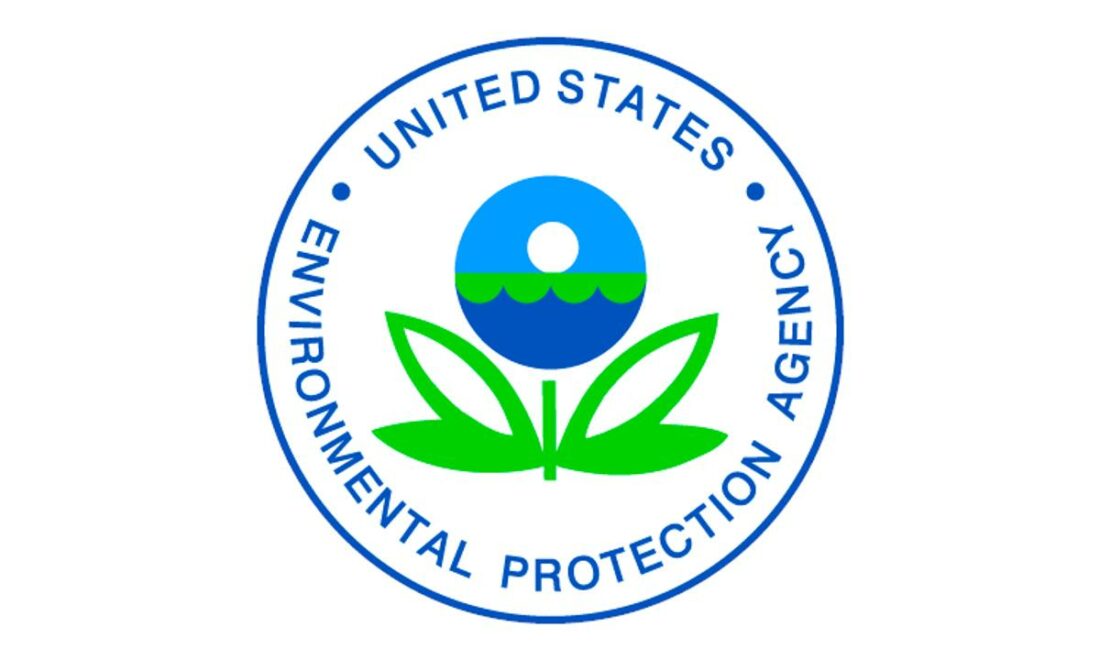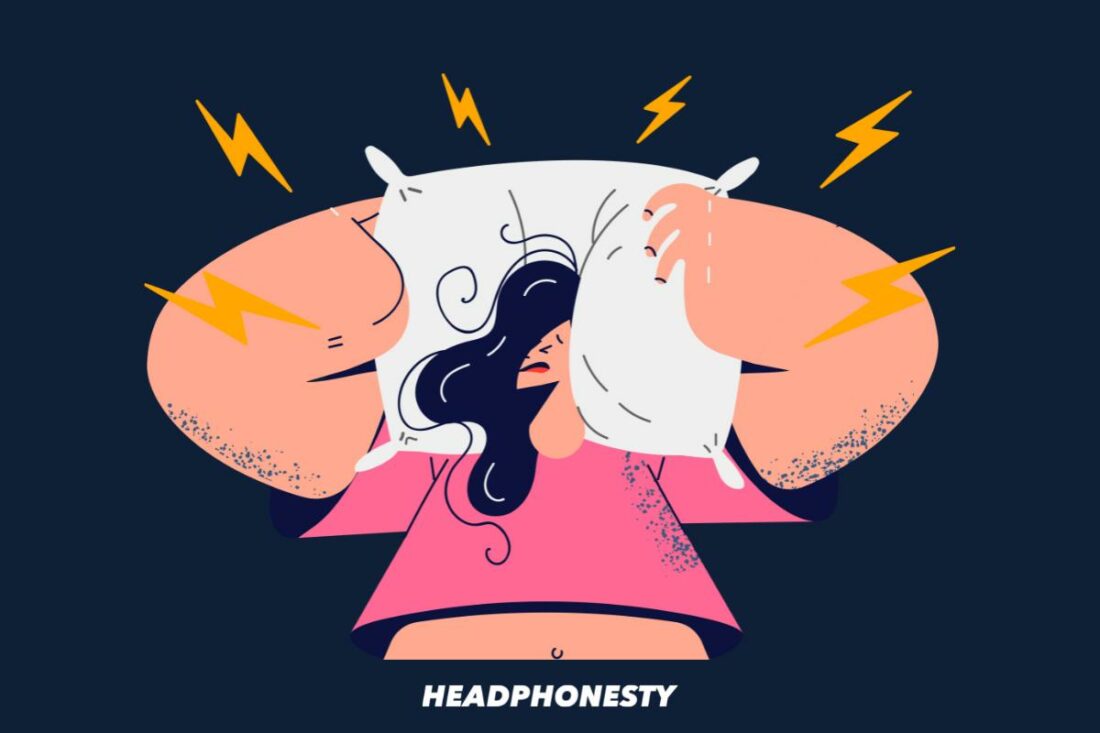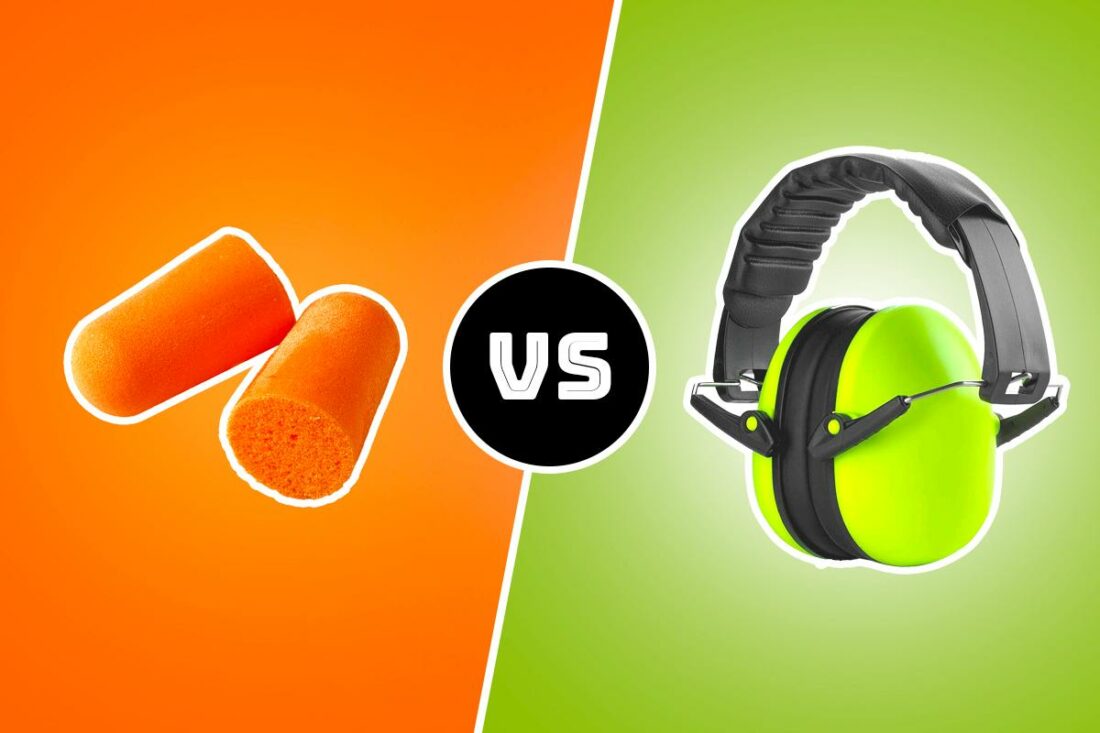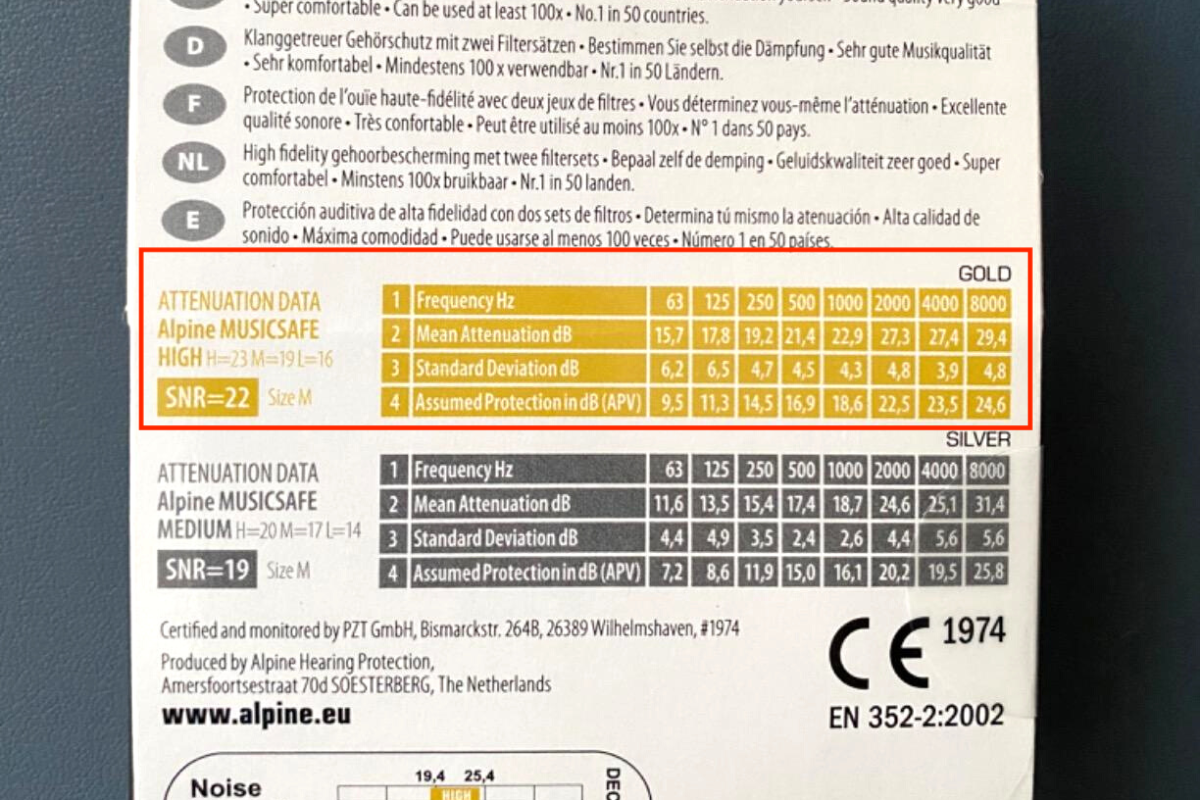Noise Reduction Rating (NRR) is one of the principal factors users look for when hunting for Hearing Protection Devices (HPDs). Without it, you wouldn’t know how well an HPD can actually block noise. Unfortunately, NRR is actually not as straightforward as you may think! NRR labels only estimate what people can achieve in ideal conditions but mostly fail to deliver in real-world applications. Not to worry; you can easily demystify NRR and choose an HPD that’s right for you by understanding the basics. To help, this article discusses everything you need to know about NRR. Let’s get started!
What Is Noise Reduction Rating (NRR)?
Noise Reduction Rating indicates an HPD’s ability to reduce the noise level coming into the user’s ears from external surroundings. NRR is an official standard for attenuation in the USA and serves as a reference point for buyers looking for HPDs. The rating shows how effectively a device attenuates external noise. The higher the rating, the more effectively the HPD will reduce noise exposure. So, an HPD with an NRR of 31 should reduce noise by 31 decibels (dB).
Who came up with NRR? Which devices must have NRR labels? How is NRR testing conducted?
Who came up with NRR?
The U.S. Environmental Protection Agency (EPA) came up with the definition of NRR in the 1970s, under their Noise Label Program. Specifically, since 1979, the EPA has made it legally binding for every HPD sold in the country to display the NRR on its label. As mentioned above, the Agency also prescribed the rules for NRR testing according to ANSI STD S3.19-1974. But it has since been revised in 2016 for a more accurate testing practice.
Which devices must have NRR labels?
Any Hearing Protection Device manufactured after 1979 must provide an NRR on the label.
How is NRR testing conducted?
Entities that manufacture and sell HPDs must test the same in a testing facility that complies with the EPA’s regulations. Consequently, they must test the device on ten different trained human subjects under anechoic conditions, using 9 test frequencies. The EPA can also ask the manufacturer to submit a device to an administrator for testing.
Why Is NRR Important?
The Noise Reduction Rating helps identify HPDs that offer the appropriate amount of protection from noise. Not knowing your HPD’s device may put you and your hearing in harm’s way. Simply put, an HPD with the right NRR will protect your ears, while using a device without enough NRR can be detrimental to your hearing Aside from insufficient NRR, a host of other factors can inherently contribute to noise-induced hearing loss. This includes exposure to certain chemicals, toxins, corrosive substances and drugs. Unfortunately, uncontrolled exposure to noise can lead to permanent hearing loss. Therefore, understanding when noise is excessive is crucial for anyone who wants to protect their ears appropriately.
When is noise considered excessive?
Noise is measured in decibels (dB), and in most countries, noise levels above 85 dBA longer than eight hours a day are deemed excessive. Try out this simple test if you’re curious about the noise level at your place of work: If you cannot converse at your normal voice level with a colleague at one arm’s distance, the noise level could be excessive. Moreover, the U.S. Occupational Safety and Health Administration (OSHA) requires employers to institute an effective and continuing hearing conservation program. This applies if noise levels in the workplace are at, or exceed, an 8-hour time-weighted average (TWA) sound level of 85 dBA. These programs involve implementing feasible administrative or engineering controls to reduce noise levels. If they are not enough, the employer must provide Personal Protective Equipment, such as HPDs, to their employees.
Permissible Noise Exposures
Noise levels and hour limits are inversely proportional, i.e., if noise levels get louder than 85-90 dBA, the permissible duration goes down. The table below outlines the permissible daily duration at sound volume from 90 – 115 dbA.
Is the NRR Accurate?
The short answer is no. The noise levels blocked by a rated Hearing Protection Device are lower than what it says on the noise reduction rating chart. There are a few reasons for this:
Testing of these devices is done in highly-controlled facilities, so there is a gap between the testing environment and real-world application. Issues such as not wearing the HPD properly (getting hair or glasses in the way of the HPD) and the overall fit could also affect the effectiveness of the noise attenuation.
How to get a more accurate protection number?
As a result of these inconsistencies, there was a need to “correct” the calculated value of the NRR into something more realistic. This process is known as derating. There are different derating calculations depending on the body overseeing the process.
OSHA derating method
OSHA applies a 50% reduction factor to the manufacturer’s labeled NRR for all types of hearing protection devices. Let’s see an example:
TWA(dBC): 100 dBC TWA(dBA): 105 dBA NRR: 28 dB Derated NRR Value: 28 * 0.5 = 14dB Estimated Exposure (dBC): 100 – 14 = 86dBC Derated NRR Value: (28 – 7) * 0.5 = 10.5dB Estimated Exposure (dBA): 105 – 10.5 = 94.5dBA
NIOSH derating method
On the other hand, the National Institute for Occupational Safety and Health (NIOSH) applies its own derating calculation, which takes into account the type of HPD.
Ear muffs: Subtract the NRR by 25% Formable earplugs: Subtract the NRR by 50% All other earplugs: Subtract the NRR by 75%.
The same “7-decibel subtraction” logic applies depending on the type of weighted decibel scale. Unlike the OSHA standard, you must subtract 7 decibels from the derated NRR. Let’s take a look at the example below: Assuming the device in question is an ear muff.
TWA(dBC): 100 dBC TWA(dBA): 105 dBA NRR: 30 dB Derated NRR Value : 30 * 0.75 = 22.5dB Estimated Exposure (dBC): 100 – 22.5 = 77.5dBC Derated NRR Value : (30* 0.75) – 7 = 15.5bB Estimated Exposure (dBA): 105 – 15.5 = 89.5dBA
Which Hearing Protection Devices Have the Highest NRR?
This depends on the type of hearing protection device you’re considering. For example, the highest NRR for earplugs is 33, but this also varies on the kind of earplugs. For example, the highest NRR is usually found in formable earplugs, like 3M’s Uncorded, Disposable, Foam Earplugs since they adapt better to the users’ ear shape. However, other types of earplugs, especially reusable ones, usually have a slightly lower NRR. Likewise, the highest NRR for ear muffs is 31, as with the 3M Peltor X5A. Whereas there are also ear muffs like the 3M WorkTunes Connect, holding a lower NRR (24). For instance, if your typical noise exposure goes up to 120 dB, getting earplugs with the highest NRR won’t be enough. According to the derating method discussed before, your earplugs will only typically reduce noise up to 16.5 dB. That only reduces the noise down to 103.5 dB, which is still too far from the recommended noise levels.
Can You Improve the NRR of Hearing Protection Devices?
Yes, it is possible to improve the hearing protection ratings of your device. And the main factor to look out for is the fit inside your ear (or over for ear muffs). For the best protection, you must opt for a device that properly seals your ear. For earplugs, this means creating a seal on your ear canal. If you use ear muffs, ensure they completely cover your ear and form a seal on the skin around them. You can also go for double or dual hearing protection (DHP) to improve the noise attenuation. This technique involves wearing two HPDs (usually ear muffs and earplugs) simultaneously.
How to get derated NRR for dual hearing protection?
Calculating the derated NRR when using double protection is straightforward. Simply identify the NRR of the higher-rated protector (NRRh) and add 5dB to account for the secondary hearing protector. Next, follow the formulas below to determine your noise exposure: Formulas:
Estimated Exposure (dBA) = TWA (dBC) – (NRRh + 5) Estimated Exposure (dBA) = TWA (dBA) – [(NRRh- 7) + 5]
Example:
TWA: 110 dBA NRR (Earplug): 29 dB NRR (Ear muff): 25 dB Derated NRR: 29 – 7 + 5 = 27 dB Estimated Exposure (dBA): 110 – 27 = 83 dBA
What Is Single Number Rating (SNR)
While the NRR is the standard for hearing protection attenuation across North America, the Single Number Rating (SNR) is the EU standard. Like the NRR, the SNR gives you an estimate of the level of noise reduction that a hearing protection device can provide. This means if you come across a product with an SNR of 30, it essentially says that the product can reduce up to 30dB of noise exposure.
SNR vs NRR
The main difference between SNR and NRR is that the former’s ratings are typically a few decibels higher. There is currently no exact formula to convert NRR rating values to SNR or vice versa, but SNR values tend to be about 3-5 dB higher. As such, an HPD with an NRR of 25 will have an SNR of about 28. This difference in values is a result of the different testing procedures. SNR is also known to be paired with the HML values. This system provides hearing protection ratings at three different frequencies — High, Medium, and Low, which in turn allows the user to select a device based on the risk levels of the frequency spectrum they are exposed to. For example, Alpine MusicSafe Pro’s golden filters come with an NRR of 19dB, but an SNR of 22dB and HML rating of:
High: 23dB Medium: 19dB Low: 16dB
How is SNR derated?
Like the NRR, the SNR value also needs a slight correction. In this instance, the derating is done by deducting 4 dB from the SNR value on the label. So, if you purchased a pair of earplugs or ear muffs with an SNR value of 28, the product will have a derated value of 24.
TWA: 110 dBA SNR: 28 dB Derated SRR: 28 – 4 = 24 dB Estimated Exposure (dBA): 110 – 24 = 86 dBA
Conclusion
The dangers of exposure to high noise levels are real. You should take the necessary steps to protect your hearing if you find yourself in one of these high-risk environments. With the NRR and SNR labels, you can at least have a rough idea of how much protection a particular hearing protection device offers. Be it lawn-mowing, listening to music, or shooting, you can now ease into your favorite activity/hobby, all while keeping your precious ears safe! How did you find our take on NRR? Did this article help you understand what it is and make an informed choice with your HPD? Do comment down below; we’d be happy to hear from you!




